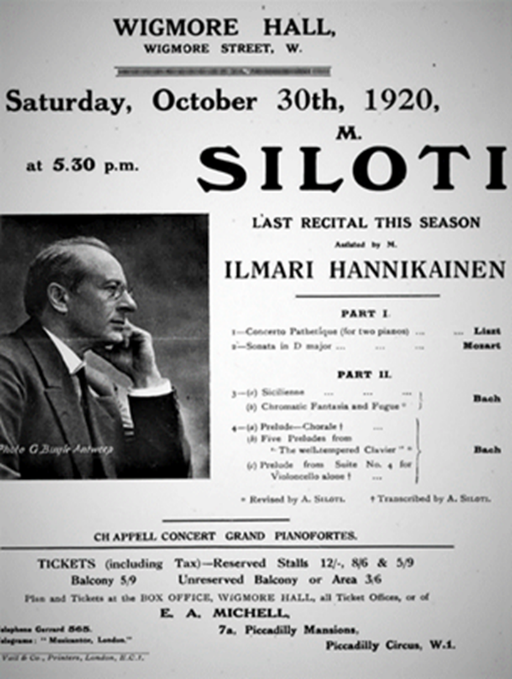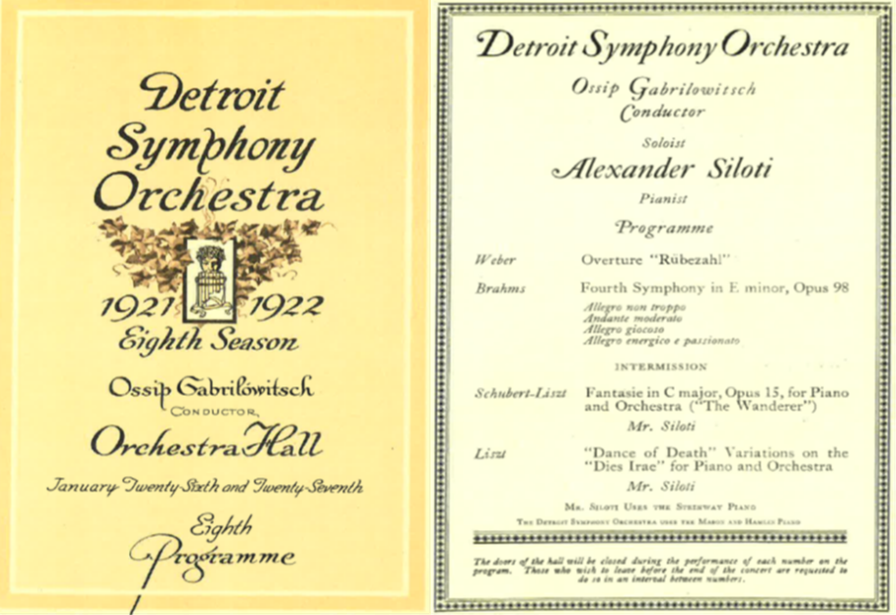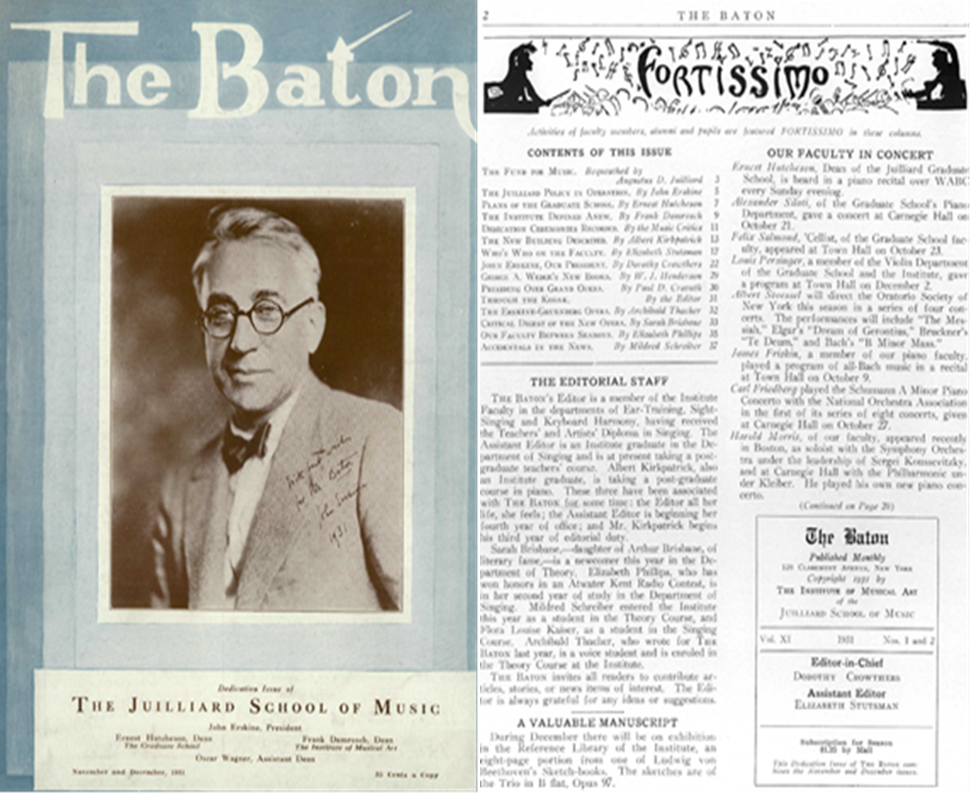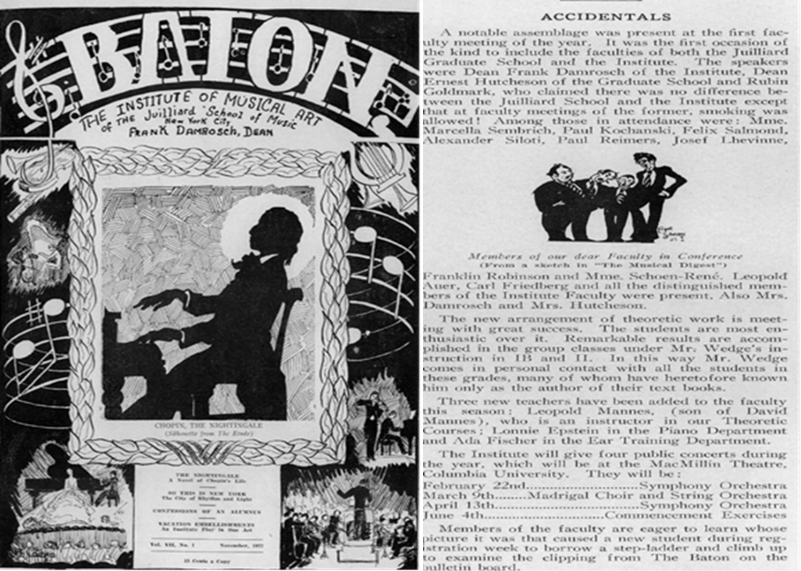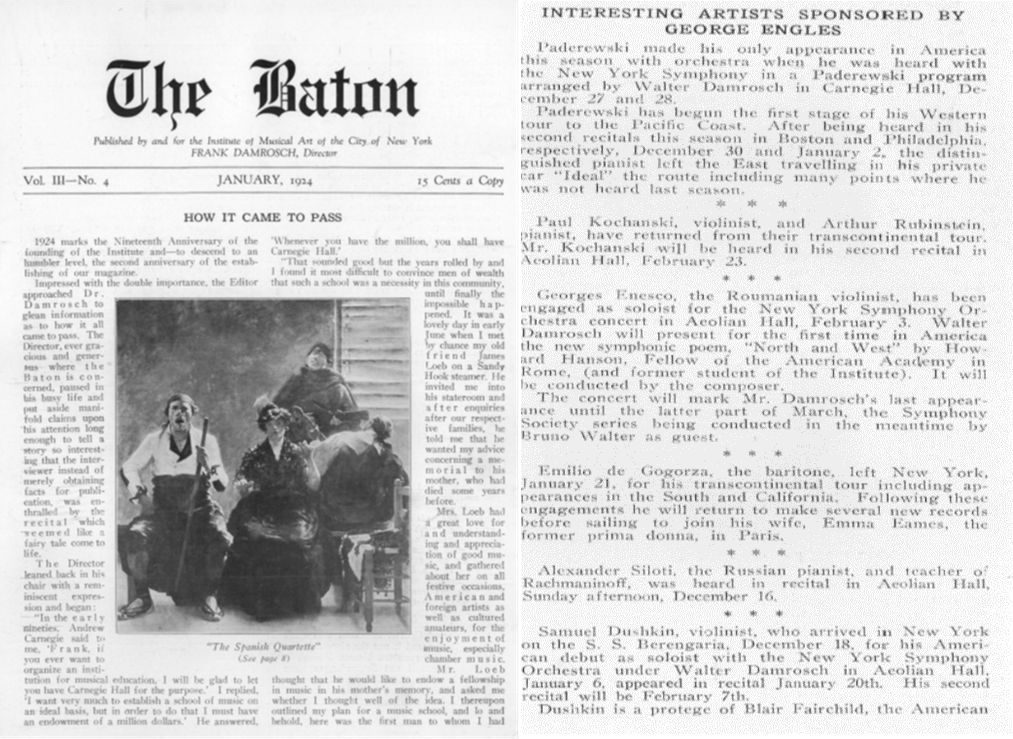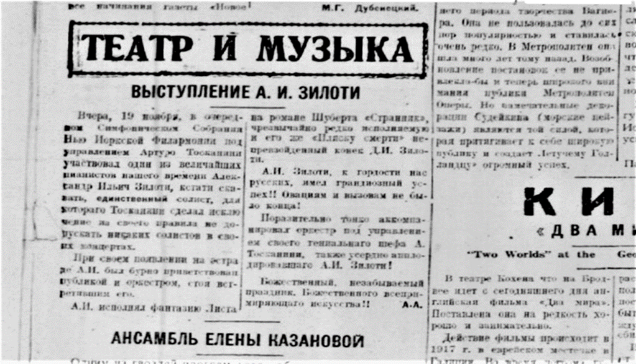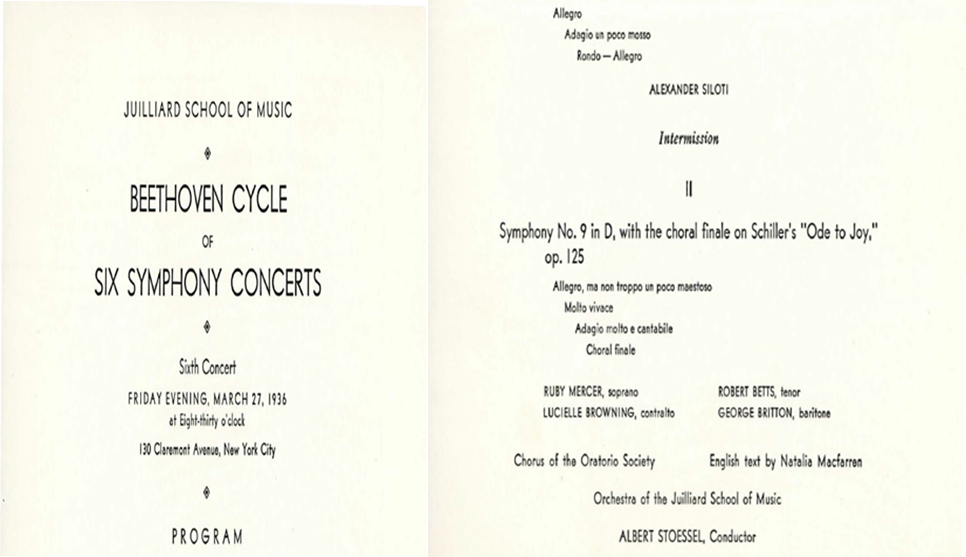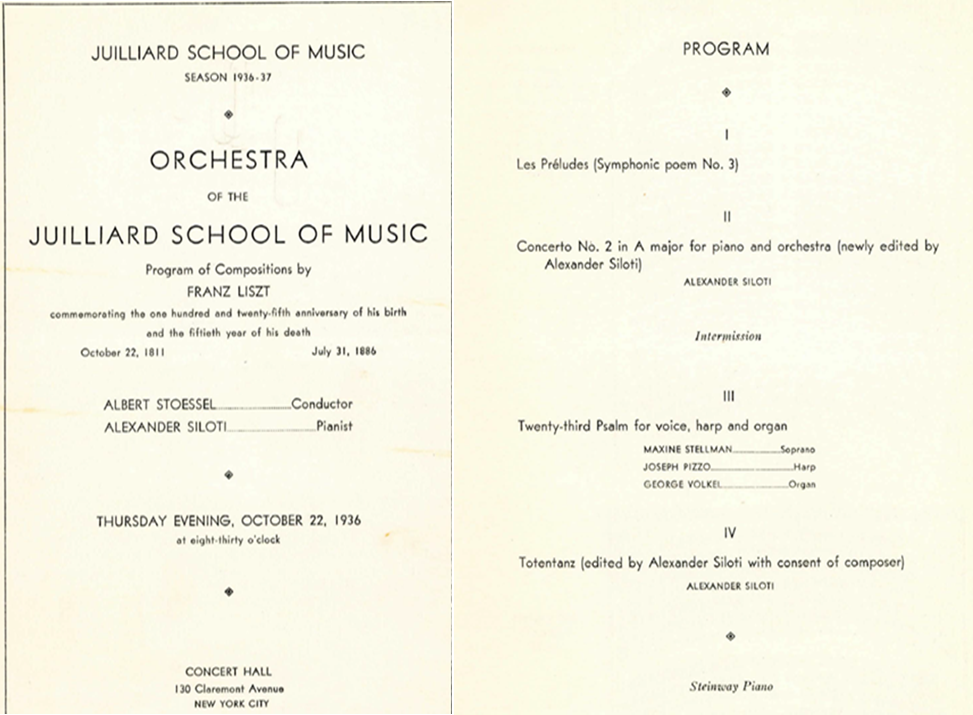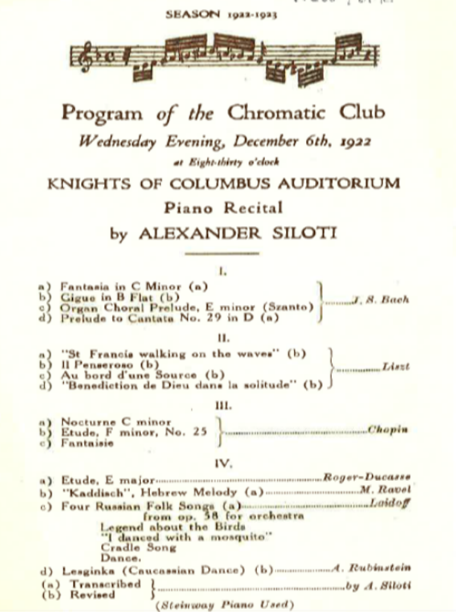1. Introduction
The Russian pianist and pedagogue, Alexander Siloti, represents a significant figure in the musical world, bridging the gap between Russian traditions and American musical landscape during the tumultuous early 20th century. Understanding the life and contributions of Siloti is not just a study of one musician, but an exploration into how cross-cultural exchanges can influence and transform artistic traditions, pedagogical practices, and performance styles.
In 2003, the first thorough foreign publication was published, which reveals not only the work but also the fate of A. Siloti. This is a monograph by American researcher, conductor, professor at Stanford University in Maryland (USA) C. Barber (2003, p.43-44) [1]. Barber's insightful examination provides a holistic view of Siloti's development as an artist, emphasizing his formative years, the maturation of his performing style, and his experiences during his exile. The author’s attention is focused on the learning process, the formation of the performing style of A. Siloti and his creative path in exile. Also, with the assistance of C. Barber (2003, p.64-67) [1], a single collection of piano editions by A. Siloti was published, but not all editions were included. S. Izotova's research in 2015 marks another pivotal moment in Siloti studies (2015, p.23) [2]. While the study predominantly revolves around Siloti’s interpretation of the Second Concerto, Izotova’s meticulous analysis sheds light on the integral elements that underpinned Siloti's growth as a pianist. The nuances captured, the interpretative decisions dissected, all point towards a larger canvas of Siloti's musical mindset.
Interestingly, since 2014, a surge of interest among Russian scholars has shifted the academic lens more intensely onto Siloti. In contrast to E. Maltseva’s (2014, p.55) [3] dives deep into Siloti's educational endeavors, exploring the symbiotic relationship between his performing prowess and pedagogical methods during his time at the Moscow Conservatory (1903-1916). E. Maltseva (2015) [3] focuses on the years of study of A. Siloti in the primary level with N. Zverev and N. Rubinstein in the conservation years. S. Horobets’ research, while touching upon Siloti’s socio-cultural engagements in St. Petersburg, introduces a fresh perspective by delving into Siloti’s lineage (2018, p.33) [4]. The nuanced exploration into the factors influencing Siloti's emigration adds a layer of depth to his biography. It's intriguing to note, however, that while Horobets leans on Barber's monograph, there seems to be a missed opportunity in not further analyzing and interpreting this translated material.
The role of the Siloti-performer is most widely studied in E. Maltseva’s (2014, p.13) [3] dissertation: an overview of the repertoire and details of the artist’s performance style are given. The piano style of A. Siloti, along with his editorial work, is the object of S. Izotova’s (2015, p.26) [2] research. While a substantial focus is on Siloti's interpretations of J.S. Bach, it beckons the question: what interpretative philosophies underscored Siloti's engagements with Bach's works? By dissecting Siloti's editorial handwriting, one can glean insights into his editorial ethos and the specific artistic choices he made.
The objective of this research is to delve into the concert repertoire, instructional methods, and musical influence of Russian pianist and educator Alexander Siloti during his time at the Juilliard School in New York City from 1925 to 1942. This study aims to provide an in-depth profile of A. Siloti's performance career, analyze his teaching methodologies, place his contributions in the context of early 20th-century music, emphasize his impact on the transmission of Russian piano traditions to the United States, and highlight his mentorship in shaping the talents of American musicians.
2. Materials and methods
This research utilizes a historical approach to examine the piano pedagogy and concert activity of A. Siloti during his time teaching at the Juilliard School in the United States. The methodology involves gathering, contextualizing, and synthesizing primary and secondary source materials related to A. Siloti’s musical career and contributions in exile after leaving Russia.
Materials:
Central to the investigative process were archival materials obtained from the Siloti Collection housed at the University of Maryland. The depth and breadth of this collection provided invaluable primary evidence, from concert programs that showcased the evolution of Siloti’s repertoire to the correspondence that revealed the intimate details of his administrative interactions and musical negotiations. The Juilliard School Archives further enriched this collection, introducing student recollections that offered a rare glimpse into Siloti’s teaching philosophy and the atmosphere of his classes.
Supplementing these primary sources was a robust set of secondary materials. Biographies offered a chronological narrative of Siloti’s life, while academic journal articles and dissertations delved into the nuances of his musical journey, providing analytical and critical layers to the unfolding story of his contributions.
Methods:
The research approach, deeply rooted in historical analysis, required meticulous sifting through these materials. The first step involved contextualizing each source, placing it within the broader narrative of Siloti’s life and the socio-political backdrop of the times. This allowed for a deeper understanding of Siloti’s choices, be it in the repertoire he performed or the pedagogical techniques he employed.
Mapping his concert activity was the next phase, with a focus on identifying patterns, shifts, and evolutions in his performance style and choices. The concert reviews, juxtaposed with actual concert programs, offered a dual perspective: the artist's intention and the audience's reception.
The pedagogical philosophy of Siloti came alive through student recollections. These first-hand accounts were treated as oral histories, capturing the essence of his teaching methods, the classroom dynamics, and the transformations students underwent under his tutelage.
The triangulation of these sources, both primary and secondary, laid the foundation for the synthesis phase. Here, the varied perspectives and themes emerging from the materials were woven together, ensuring a cohesive, nuanced, and holistic narrative of A. Siloti’s influence.
The culmination was an interpretation that highlighted not only his contributions to American piano pedagogy but also his role in preserving and transmitting the Russian piano traditions during his exile. All of this was done with a keen eye on the unique challenges and opportunities of the American musical landscape of the 1920s and 1930s, providing insights into how Siloti seamlessly integrated and adapted to this environment.
3. Results and discussion
3.1. Concert activity of A. Siloti
3.1.1. Siloti's Emigration: Artistic Integrity and Political Strife
A.I. Siloti (1863-1945) is a little-studied figure in the musical space of the last third of the 19th and the first half of the 20th century. Key information about him is reduced to several biographical and editorial positions. Alexander Siloti was renowned for his vibrant and virtuosic technique, effortlessly delivering complex pieces with agility and flair that often left critics in awe of his dazzling passagework. Beyond this technical prowess, he possessed an expressive, singing tone, prioritizing melodic beauty and expressiveness over mere volume, resulting in a warm, rich tonal quality. This tonal depth was further enriched by his nuanced use of the pedal, which expanded the piano's tonal palette and added layers of color to harmonies and phrases. Additionally, Siloti's approach to rhythm, rooted in Romantic performance traditions, allowed for rhythmic freedom, lending his performances a spontaneous and dramatic flair.
His attention to detail was evident in his interpretations of contrapuntal works, notably those by Bach, where he masterfully highlighted inner melodic lines that could easily be obscured on the piano, especially when compared to the organ. In adapting works like Bach's for the modern piano, Siloti made innovative choices, exploiting the instrument's dynamic capabilities and the sustaining pedal to create interpretations that resonated with audiences in contemporary concert settings.
A. Siloti displayed immense musical talents from a young age. He began piano studies with Nikolai Zverev at age 6 and later enrolled at the Moscow Conservatory under Nikolai Rubinstein and Tchaikovsky. Siloti graduated with a gold medal in piano in 1883. His early performing career included concerts across Russia and Europe. Siloti's studies with Franz Liszt in Weimar from 1884-1887 honed his piano technique and artistry. He was appointed to the Moscow Conservatory faculty in 1889, where he taught prominent musicians like Rachmaninoff, Medtner, and Igumnov. (Churpova, 2017, p.21) [5].
A. Siloti is not only a cousin, but also a teacher of S. Rachmaninoff at the Moscow Conservatory. Pianists also know several editions of works by J.S. Bach, which belong to A. Siloti (the most famous is the Choral Prelude in h-moll). Naturally, the picture of A. Siloti’s creative path will be incomplete without an analysis of the factors that contributed to the decision to emigrate from Russia. In the first third of the 20th century, on the verge of the February and October coups, the lives of many members of the Russian intelligentsia and science were destroyed. Among them are N. Berdyaev, A. Herzen, F. Chaliapin, I. Bunin and many other figures of culture and art. A. Siloti even perceived the social turning point of the February Revolution (1917) positively, supporting the idea of accessibility of art for all strata of society. The February Revolution in 1917 led to the abdication of Tsar Nicholas II and the end of imperial rule in Russia. The so-called Public and Folk Concerts of his St. Petersburg enterprise “Concerts by A. Siloti” speak in favor of this. However, the coup state of October 1917 and the subsequent aggressive processes in the political and social spheres demonstrated the real intentions of the revolutionaries and the complete rejection of elite art (Churpova, 2017, p.21) [5]. The October Revolution, also known as the Bolshevik Revolution, occurred in October 1917 when the Bolsheviks seized power in Petrograd. This led to the creation of the world's first socialist state, the Russian Soviet Federative Socialist Republic.
A. Siloti’s “fault” in the eyes of the new leadership of the Mariinsky Theater, represented by A. Lunacharsky, was A. Siloti’s refusal to hand over the keys of the imperial lodge to the representatives of the Bolshevik government. This is evidenced by a document from the State Archives of the Russian Federation, according to which in December 1917 the Russian Extraordinary Commission under the Council of People’s Commissars to Combat Counterrevolution and Sabotage issued a warrant number 73 for the arrest of A.I. Siloti (Figure 1).

Figure 1 The warrant No. 73 for the arrest of A. Siloti, stored in the fund of the State Archive of the Russian Federation. Source:State Archive of the Russian Federation (1950a)[6].
Concerning specifically the refusal to hand over the keys to the lodge to the new leadership, A. Siloti argues that he will hand over the keys personally to “only representatives of the legal authorities” (State Archive of the Russian Federation, 1950a) [6]. A. Siloti was released only a year later. The relevant archival document states the reasons “for health reasons” and “due to complete pacification in the State Theater” (Figure 2).
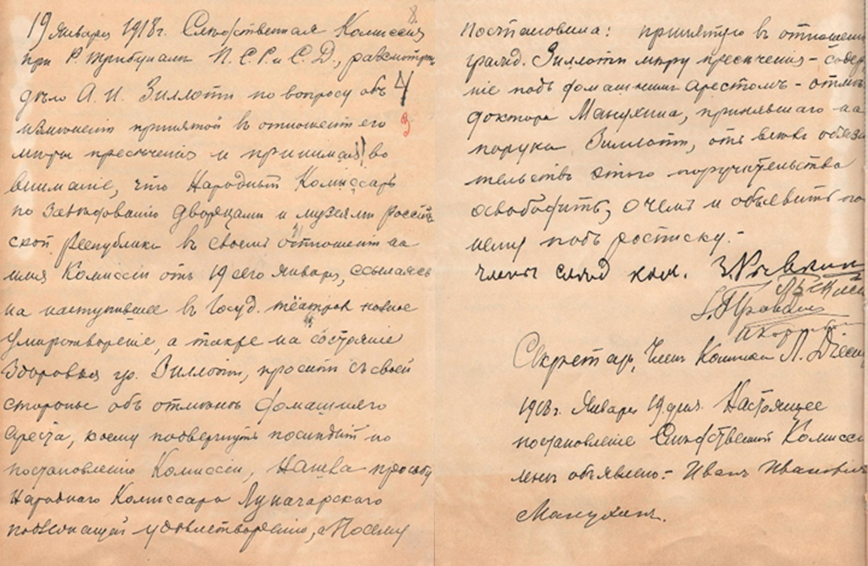
Figure 2 Petition for A. Siloti’s exemption, stored in the fund of the State Archive of the Russian Federation; Source: State Archive of the Russian Federation (1950b) [7].
However, delving into the historical context, it becomes evident that without the active intervention of the doctor of the Trubetskoye bastion and a good friend of the musician ( Ivan Manukhin ( the fate of A. Siloti was much more tragic. As a result, it's observed that the key factors that led to the decision to emigrate A. Siloti, was not only a destructive attitude to traditional art, but also a threat to the life of the artist and his family (State Archive of the Russian Federation, 1950b) [7].
3.1.2. European Performances 1919-1921: Pre-US Reputation
Until the final move to the United States and even before the beginning of his pedagogical work in Juilliard, the object of study can only be the performance of A. Siloti. After leaving Russia in 1919, he and his family moved to Finland. The first concert in this country took place on April 25, 1920 (Mikelli). Already in this concert the stage was seen by the editors of A. Siloti’s works by J.S. Bach. In addition, the program consisted of works by F. Chopin, A. Liadov, F. Liszt, S. Rachmaninoff, A. Rubinstein and F. Schubert (transcription by K. Tauzig) (Dexter, 1989, p.20) [8].
A. Siloti’s family stayed in Finland for less than a year. This conclusion can be drawn from dates of the next concerts, which took place in London. The pianist's performance began with a performance at Wigmore Hall on October 23, 1920. On the stage of the famous London Concert Hall performed by the Russian pianist sounded pearls of his repertoire, namely “Islamey” by M. Balakirev, “Sonata-fantasy” by A. Scriabin, “God Blessing Alone” from the series “Poetic and religious harmonies” by F. Liszt and “Fantasy” by F. Chopin. A critical review of this event reveals the sound tasks that A. Siloti set for himself and later for his American students: “He mainly played mezzo-piano and mezzo-forte, but he could also hit the keys very hard. However, it still remains music” (Barber, 2003, p.143) [1].
Another important performance in London is a joint concert by A. Siloti with his student of the pre-revolutionary period, a young Finnish pianist, who later moved with his teacher to Antwerp (Belgium) Ilmari Heinnikainen (1892-1955). He began his studies with A. Siloti still in Petrograd in 1916-1917. Evidence of cooperation between a student and a teacher during the period of emigration is the relevant poster of archives from the University of Maryland (Figure 3).
The ensemble program consisted of Mozart’s Sonata in D major and F. Liszt’s Pathetic Concerto in two grand pianos. In the analysis of A. Siloti’s solo program, it can be seen that his repertoire was atypical for the London audience. It is represented entirely by the works of J.S. Bach. According to the poster, Chromatic Fantasy and Fugue, and also five preludes from WTK are marked as “revised by A. Siloti”. Choral Prelude and Prelude from Cello Suite №4 in E flat major are defined as transcriptions. Thus, A. Siloti set a foreign listener a double task - to perceive not only the music of the Baroque era, which was a little-known field for such an audience, but also his own vision of this music (Fitzpatric, 1970, p.100) [9].
3.1.3. Performing and pedagogical activities of A. Siloti in the United States
After years of searching and trying to adapt to the new reality, only in 1921 began, relatively speaking, the fourth period of piano activity of A. Siloti 99% associated with the Juilliard School of Music. This institution received the status of the highest for training of musicians only in 1926. The school was founded as the Institute of Musical Arts in 1905 and merged with the Juilliard Graduate School (founded in 1924) to become the Juilliard School of Music in 1926. At that time, the development of higher music schools was the result of charitable activities of wealthy people who supported American culture and education in the early 20th century: “As a supporter of the music art, he contributed to the creation of the famous Juilliard School of Music in New York in the early 20th century” [8]. The school itself was opened in 1924, so A. Siloti was at the origins not only of this school, but also higher music education in the United States as a whole. American culture of this era was formed by the emigrants of the first wave (the next blocs of Russian emigrants came in the 30s and postwar years, in the 1970s and 1990s). Almost simultaneously with A. Siloti among the creative elite of America work Joseph and Rosina Levin, famous pianists and teachers who helped his colleague get a job at Juilliard High School: “In 1924, J. Levin was invited to one of the largest American educational institutions in the field - Juilliard Graduate School. The students of R. Levina’s class in different years were musicians who, as a result, became the pride of American performing arts: Edward Auer, John Browning, Walter Buchinsky, John Williams, Misha Dichter, Van Cleburne, James Levine, Garrick Oleson, Daniel Pollack, Marx Jablonski, etc. In addition to Joseph and Rosina Levin from 1925 to 1942, Professor of the Moscow Conservatory A. Siloti taught” (Fitzpatric, 1970, p.76) [9].
In addition, in 1924 in Philadelphia J. Levin published a methodical work “Basic principle of piano playing”, which were based on the principles of piano, founded by V. Safonov, and therefore, like later A. Siloti, promoted the specifics of the Moscow school, which was based educational process not only at the Juilliard School, but also in part at the Conservatory of Chicago, the Universities of Denver and Bolger. S. Rachmaninoff has lived in America since 1918. He was the first to meet his cousin and his family aboard the Carmania, on which the A. Siloti with his family arrived in the United States from Southampton, England, in 1921. Naturally, when A. Siloti himself needed help in the first years after the final emigration, S. Rachmaninoff actively supported his teacher and relative. T. Jason (2021, p.120) [10] draws the following conclusion about the relationship of artists: “The relationship between Rachmaninoff and Siloti was bitter and sweet, but in the end, they were close friends. Rachmaninoff and Siloti organized theatrical events and concerts together when they were in St. Petersburg and later in New York. There was a musical trust between them; cousins performed together, exchanging roles of pianist and conductor”.
The modernization of the genre concert event is initiated by American conductor and composer Ukrainian origin (his family emigrated from Rivne) - Leonard (Leonid) Bernstein. Based on E. Yakovleva's research, evening courses were introduced in top-tier educational institutions, including the renowned Juilliard Music School. These courses aimed to foster musical education and enhance the overall aesthetic appreciation among a broader audience. Such initiatives, in combination with other factors, played a pivotal role in inspiring L. Bernstein's innovative project that artistically expanded the concert genre with commentary (Kashkin, 1891, p.34-36) [11].
Alexander Ilyich officially joined to Juilliard High School of Music in October 1925, where he quickly gained prestige, primarily as a student and follower of the traditions of F. Liszt and N. Rubinstein. In the early 1930s, there were 60 students at the piano faculty in Juilliard. Tuition was paid, on a contract basis, and amounted to $5000 per year. In 1926, the year after he began working at Juilliard, A. Siloti became one of the eighteen invited world-famous concert pianists who recorded with Aeolian using Duo-Art technology. In addition to A. Siloti, the list included I. Paderevsky, M. Hess, I. Friedman, I. Hoffman, V. Pahman, A. Corto, V. Backhaus, and others. From 1922 to 1931, New York newspapers called the pianist's “second birth” ( now for American listeners (Kulish, 2021, p.200) [12]. His American activities can be divided into three key vectors: performance, pedagogy, and editing. The concert activities and editing during A. Siloti’s work in Juilliard were aimed at a common result, as most of the works of A. Siloti’s solo program were played in his own transcriptions.
His American journey began from a concert at the Odeon Theater in Missouri with the St. Louis Symphony Orchestra conducted by R. Hanz on January 6, 1922. The representation of the artist on the poster was stated as follows: “Siloti, a student of Liszt, a weekly symphony soloist” [1]. The concert season of 1922-1923 was very fruitful for the pianist and played the role of a springboard for the further dynamic development of his career. The archives of the University of Maryland contain the programs of several speeches by A. Siloti of the early emigration period, i.e., before the beginning of teaching in Juilliard. Among them are two solo concerts by A. Siloti, which have a similar program. The first took place on March 16, 1922 in St. Louis, and the second at the Oberlin Conservatory (Ohio) on March 21, 1922 (Figure 4).
As in the previous concert, the lion's share of the program consists of works by F. Chopin, F. Liszt and J.S. Bach. The repertoire includes Andante with variations by Schubert-Tauzig, a block by F. Liszt, which this time was performed in the original versions of the works. A feature of the Chopin block is the performer’s choice of versions with notes by F. Liszt. All of Bach’s works have now been performed by A. Siloti himself. Even before joining Juilliard, A. Siloti actively collaborated with the most famous American orchestras, with which his students later played. Among them is the Detroit Symphony Orchestra, with which A. Siloti played in the eighth season (1922-1923) (Barber, 2003, p.101) [1]. For the genre of solo and orchestra, he chooses repertoire, thanks to which he has already gained authority in Europe: Schubert-Liszt, Fantasy “Traveler” in C major, and “Dance of Death” by F. Liszt. This is evidenced by the relevant program from Maryland archives (Figure 5). The orchestra played under the direction of a well-known representative of “Russian abroad” in the United States, Joseph Gabrilovich.
According to the poster, at both events A. Siloti performed Schubert-Liszt's Fantasy “Traveler” already known to the American public (Figure 6). A year before teaching at Juilliard, in the 1923-1924 season, A. Siloti actively established creative contact with the New York Philharmonic Society (Tanticarn, 2013, p.28) [13]. This is evidenced by concerts with the New York Symphony Orchestra in Bridgeport on October 28 and Woosley Hall on October 30, 1923 under the direction of conductor Wilhelm van Stragen.
Having started his teaching career at the Juilliard School, A. Siloti remains in active performance, regularly taking part in the concert life of the Juilliard Piano Faculty. A. Siloti’s performances within the school itself can be judged from fragments from the student publication “The Baton”, the founders of which were Frank Damrosch who in 1905 opened the Institute of Arts, which later became the Juilliard School of Music; and its then director Ernst Hudchenson, who hired A. Siloti, and after his dismissal appointed annual maintenance to the famous professor. Thus, in the November 1931 issue of the newspaper, A. Siloti’s concert on October 21, 1931 in Carnegie Hall as a representative of the teaching staff of the Juilliard Piano Faculty was noted (Figure 7). His colleagues James Friskin with the Bach’s program on October 9 and Karl Friedberg as a performer of R. Schumann’s Piano Concerto on October 27 of the same year are also mentioned.
Another issue of this local publication confirms the active scholar and organizational role of A. Siloti in the work of Juilliard's piano faculty. The November 1927 issue describes the first open conference of high-level students and teachers of the Institute of Arts and, according to modern terminology, postgraduate education. Among the participants were piano teachers Alexander Siloti, Marcella Sembrich, Paul Kokhansky, Felix Salmond, Paul Remers, Joseph Levin and Franklin Robertson. (Figure 8).
Instead, the January 1924 issue of this publication contains information on A. Siloti’s audio recordings using Duo-Art technology based on the Aeolian Company. He is presented as an artist, whose record was sponsored by the famous American philanthropist George Engles. This issue is dedicated to the history of the Institute of Arts in New York, and the work of J. Engles is an important milestone in its development, because thanks to his efforts there were records of many celebrities, such as P. Kokhansky, George Enescu, Emilio de Gorza, etc. who later became teachers at Juilliard. According to the magazine, A. Siloti’s sponsorship concert took place on December 16, 1924 in Aeolian Hall (Figure 9).
A. Siloti’s further concert activity as a professor at the Juilliard School is also mentioned in emigrant publications, one of which is the daily newspaper “New Russian Word”, published in New York since 1917 and covering aspects of the life of forced emigrants, including cultural component. The November 1930 issue is a joint concert of A. Toscanini and A. Siloti in the regular symphony meeting of the New York Philharmonic on November 19, 1930: “The only soloist for whom Toscanini made an exception to his rule not to allow any soloists in his concerts” (Figure 10).
Despite his age, A. Siloti played with the Juilliard School Orchestra every year, participated in chamber concerts, actively collaborated with Stanway - for example, took part in a concert held on October 21, 1931 in New York’s Stanway Hall. At that time, Siloti was already 68 years old ( a fairly respectable age, when the piano apparatus of the performer is already gaining a tendency to decline in activity.
Another important concert with the Juilliard School Orchestra took place on March 27, 1936 in New York as part of a series included six symphony concerts by L. Beethoven. The poster for this concert has also been preserved in archives of the Juilliard School (Figure 11).
A. Siloti performed L. Beethoven’s “Imperial” concert No. 5 conducted by Albert Stossel. Among the works of L. Beethoven in the series of concerts A. Siloti also performed 12 variations on the Russian theme, sonatas op. 27 No. 2, op. 28, op. 31 No. 2, op. 109, op. 111 and Concerto for piano and orchestra No. 4. And on November 7, 1936, one of A. Siloti’s most significant speeches took place, as it was dedicated to the work of his mentor F. Liszt: “Siloti took the opportunity to honor the memory of F. Liszt, who died 50 years ago” (Tanticarn, 2013, p.78) [13]. This event was preceded by another concert on the occasion of the 125th anniversary of the birth and 50th anniversary of the death of F. Liszt, which took place on October 22, 1936. The program of this performance draws attention to the performance of all piano works edited by A. Siloti, as evidenced by the poster itself (Figure 12).
The A-dur concerto is marked as a newly edited version, probably prepared exclusively for this concerto. “Dance of Death” is marked as “edited by Siloti with the consent of the composer”. This means that in the given version A. Siloti performed it when he was still a student of F. Liszt, and therefore made the first steps of editing long before his concert and pedagogical activities in Juilliard, but at that time, apparently, did not put for the purpose of creating a printed musical text.
3.3. Editorial works of A. Siloti
In addition to his performing and teaching, Alexander Siloti was highly regarded for his editions of piano works by composers such as Bach, Liszt, and Rachmaninoff. As an editor, Siloti aimed to make classical compositions more accessible to both performers and audiences while still respecting the composer's original intents.
Siloti's most famous editorial works were his transcriptions and revisions of Bach's music for piano. He edited preludes, fugues, suites, and other keyboard works by Bach with the goal of making them effective on the modern piano's extended range and resonance, while preserving their polyphonic integrity. Siloti's Bach Editions were praised for their musicality, as he clarified the inner voices and brought out melodic lines (Stepnyak, 2005, p.61).
One of Siloti's most renowned editorial works is his transcription of Bach's Choral Prelude in B minor. By transcribing this piece, originally for organ, for piano, Siloti made it accessible to a broader audience and integrated it into standard piano repertoire. His transcription not only retains the intricate counterpoint of Bach but also infuses it with the expressive capabilities of the piano, blending the baroque authenticity with the Romantic sensibilities of his time. It deserves special attention the large-scale solo concert in New York on December 6, 1922 (Figure 13).
As can be seen from the explanations at the end of this poster, almost all works are editions, but they are divided into two key groups, which have only editions of A. Siloti: transcription and processing (or revision). In this case, the category of transcriptions includes “Fantasy” and Prelude from the Cantata op. 29 J.S. Bach, “Kaddish” from the series “Two Jewish Songs” by M. Ravel and Four Russian Folk Songs by A. Lyadov. The group of revised versions includes Zhiga by J.S. Bach, the whole block of works by F. Liszt (“St. Francis on the Waves”, “Reflection”, “By the Stream” and “Blessing of God Alone”) and “Lezginka” by A. Rubinstein from opera “Demon”. The last work is a revision, as the first transcription to the original was made by a colleague of A. Siloti at the Moscow Conservatory and his permanent partner in the ensemble for ten years P. Pabst. Organ prelude (transcription by T. Santo) by J.S. Bach, block by F. Chopin (Nocturne in C minor, Etude op. 25 in F minor and Fantasy) and Etude in E major by F. Roger-Ducas was performed without any editorial changes by A. Siloti’s.
Siloti also edited works by his student Rachmaninoff, as well as other Russian composers such as Balakirev, Lyadov, and Rubinstein. His transcriptions of Russian folk songs helped popularize this repertoire outside Russia. Siloti was careful to preserve the distinctive Russian idioms in his editions (Horobets, 2018, p.33).
A. Siloti’s students from the period of emigration, he paid special attention to the structure of the musical phrase, the structure of its development at a tempo set by the composer, preserving a specific artistic image, and therefore shared with his students the secrets of phrasing. In one of his conversations, K. Igumnov concretizes these techniques as follows: “In this connection of a musical thing, the most difficult task is to find the intonation points that stand out. Here you can plan differently. It is possible to make and so that everything will turn out very logically, and nevertheless there will be “not that”. Probably, in the term “intonation points” this pianist puts the discovery of accents in a separate musical phrase which is done with the help of sound control. It can be assumed that such peculiarities of attitude to sound and carcass were formed in him initially during his study in A. Siloti’s class.
3.4. Overview and features of pedagogical activities of A. Siloti
3.4.1. Siloti's Progressive Pedagogy: Group Dynamics, Individual Mastery, and the Legacy of Liszt
One of Siloti’s most famous students in the United States is the future composer and reformer of cinema Mark Blitzstein. He came to Silotis class in 1923 and studied until 1926. Twice a month, during three years of studying with A. Siloti, Blitzstein recorded at the Siloti’s Studio in Ansonia (Gordon, 1989, p.78-79) [14]. According to Blitzstein’s memoirs, A. Siloti gave him lessons in French and even sang motifs in different languages: “Master was happy to have such students who would support and promote his ideas and ideals in the world” (Gordon, 1989, p.54) [14].
According to his memoirs, A. Siloti, unlike most teachers of the time, taught not only technical difficulties, but also methods of relaxation, opportunities to relax the piano apparatus. In addition, he involved to the work knowledges of theory and musical analysis. Mark Blitzstein’s training resulted in his brilliant debut with the Philadelphia Orchestra in July 1926 (Pollack, 2012, p.44) [15]. The key work of the program was the Concerto for piano and orchestra No. 1 F. Liszt. It is worth noting that A. Siloti in Juilliard was associated with his most famous teacher, Ferenc Liszt, and Siloti promoted in his teaching during the period of emigration, the principles that crystallized in the Weimar period. In this regard, it can be called an unusual form of teaching a professional tool in a group, by analogy with a modern master class or open training. Liszt himself worked with his students according to the same scheme, inviting several students to individual classes at once. One of the students of Professor Greta Alois describes the corresponding trajectory of such classes according to the Liszt’s system in Siloti’s lessons: “Siloti encouraged us to be present at each other’s lessons. In fact, it was a difficult lesson, it was easier to solve problems yourself without sharing them with other students” (Schneider von Wiehler, 2021, p.111) [16].
From 1918 to 1939, A. Siloti taught in other American cities in parallel with the University of Juilliard, and often gave private lessons. He studied with Greta Alois in Manhattan. As can be seen from the above quote, not all students found it easy to accept the system of continuing traditions of the famous Hungarian maestro. However, from the point of view of the interpretive component of the creative and performing activity of any musician, such a torsion of the pianistic path according to the formula “from practice to science” was justified in the stage experience. Although it became innovative for its time. Undoubtedly, A. Siloti was a model of a concert performer for his students, and the principle of constant support of a wonderful piano form can be considered one of the main pedagogical principles of Alexander Ilyich. The teacher’s ability to demonstrate the required result to his student was a fundamental factor in the work of A. Siloti during his lessons. Judging by the memories of students, after many years, this principle in the work of the professor left a very bright mark. Thus, in an open form, the performance of a work was analyzed not only by the teacher but also by other students. Thanks to such a double analysis, not only detailed work on errors was accelerated, but also the interpretive style of each student and the ability to work independently from the teacher were formalized. N. Rubinstein during classes with A. Siloti necessarily demanded that 6-8 of his students be present at the lesson (Stepnyak, 2005, p.61) [17]. Because of his office was located opposite the piano classrooms, he often attended classes of other teachers, which was quite unusual for the organization of such classes. This is evidenced by his colleague M. Kashkin: “Sometimes he left the classroom, forcing a student to replay a passage; it also happened that he brought visiting artists to his class who visited him and forced students to play with them” (Jason, 2021, p.93) [10]. A. Siloti himself developed the same independence in his lessons. There are currently no reliable quotations about the practice of inviting A. Siloti to other teachers for their lessons, but he believed that working in groups helps students gain experience in front of the audience, to expand knowledge in the field of piano literature. A. Siloti could follow this practice for two or three months, and only then assigned individual tasks.
A. Siloti usually started classes with students at 10:00 in the morning and worked until the evening, depending on the planned number of lessons. Relying, again, on the Liszt system, he made sure to divide the students into groups that had to come twice a week. In this form of work, he gave instructions for the correct system of piano lessons. This was one of the innovations for the educational process at that time, because local teachers immediately switched to individual lessons, without resorting to group, speaking today’s pedagogical language, training forms of learning (Rui, 2023, p.80-81) [18]. If you try to follow the line of knowledge transfer from teacher to student, then the recommendations of K. Igumnov can be traced to A. Siloti’s method. This is especially true of articulations: “It is no coincidence that Konstantin Nikolaevich attached so much importance to identifying the so-called ‘intonation points’ of the phrase, coherence and convexity of individual motives” (Milshtein, 1961, p.23-24) [19].
3.4.2. Siloti's Sound Mastery: The Fusion of Russian and American Piano Pedagogies
One of the key pedagogical principles of A. Siloti was extreme attention to sound production, which, in turn, he adopted first from N. Rubinstein and later improved skills with F. Liszt. He liked to repeat that in a piano plaing there are four rules: “Sound, sound, sound, sound”. Thus, the pedagogical link Rubinstein - Liszt - Siloti - Igumnov is formed. A. Siloti followed this strategy already during his teaching in Juilliard, that is, he transferred the pedagogical experience of the Russian period to further work in the United States during the period of emigration. And, according to the memoirs of his American students given in this section, if the Russian piano school since the time of T. Leshetitsky, N. Rubinstein, A. Rubinstein undoubtedly prioritized the sound and auditory impressions of an individual performer, then for the American piano school meticulous practice of sound and the selection of appropriate playing techniques was a piano reform (Milshtein, 1961, p.70) [19].
B. Dexter (1989, p.56) [8], a future professor at the University of Michigan School of Music, recalls the beginning of his studies with A. Siloti: “I started studying at Juilliard in 1934 with Siloti. I was a teenager; at the age of seventy-one, he was the oldest teacher of Juilliard I knew… He had his method, using the downward movement of the hand for a melodic tone, despite the weight of the hand for the subordination of voices. He also taught us to train without a pedal, slowly and loudly… With Siloti I learned to read music accurately and polyphonically”. B. Dexter (1989, p.10) [8] emphasized that, in his opinion, the pedagogical style of A. Siloti was most influenced by the methods of working with M. Rubinstein. Dexter drew attention to the practice of virtuoso details of the work by hypertrophied keystrokes as an exceptionally useful type of practice that provides maximum control, then allows you to vary the tempo and “play” with the dynamics. An example of the repertoire for this form of work in his memoirs, he calls, paradoxically, the works of C. Debussy. William Capel, who studied with A. Siloti's colleague O. Samaroff-Stokowska, did the same. B. Dexter (1989, p.44) [8] studied with A. Siloti until 1939 and during this time he worked on a rather complex piano repertoire. In his article he mentions Variations on an Original Theme by L. Beethoven in C minor, Serious Variations by F. Mendelssohn, Intermezzo by J. Brahms, pp. 117, 118, and Concerto by F. Letter in E major. However, he considers the quintessence of his professor’s teaching style not to master the secrets of virtuoso playing, but the ability to concentrate as much as possible on the artistic material and differentiate the interpretive tasks set by the composer. B. Dexter (1989, p.73) [8] recalls this high level of skill as follows: “His standards were high and he wanted us to meet them. It required a lot of patience and hard work, which could tire a student for 45 minutes. He believed that this time was enough for one continuous lesson, and after that the student should walk around the class and rest before continuing the lesson. He showed us this method and we understood it”.
3.4.3. A Legacy of Student-Centric Teaching and Enduring Musical Traditions
A. Siloti tried to convey to the student importance of the ability to concentrate as much as possible on the artistic material and to differentiate the interpretive tasks that the composer sets for the performer. It is worth noting that A. Siloti’s private teaching was treated no less meticulously and responsibly than his official work. He took in not only adults but also children. In working with them, he took the position of his first teacher at the Moscow Conservatory Nikolai Zverev. Nikolai Zverev (1832-1893) studied at the Faculty of Physics and Mathematics of Moscow University, served as a ministerial official in Moscow and St. Petersburg. He took piano lessons from O. Dubyuk, later from A. Hanselt. Having no professional music education, in 1870 he opened a private boarding school for the training of young pianists. He became famous as a teacher of primary education. From 1883 he became a teacher at the Moscow Conservatory (at the invitation of M. Rubinstein) (Kashkin, 1891, p.50) [11]. N. Zverev at the highest level laid in A. Siloti basic pianistic skills:
a special culture of carcass and timbre color of sound, a large technical arsenal;
taught the basic principles of studying a piece of music and the basic technical means of processing musical material.
N. Zverev instilled in his students first of all a taste for classical music. It is to him that A. Siloti owes his desire to develop himself as a professional, to the constant expansion of his cultural worldview (it can be assumed that later this was embodied in the educational activities of Alexander Ilyich). An important detail of piano education was Zverev’s approach to the direct purpose of classes, which is a balance between the development of artistry. This characteristic in the long run may affect the choice of future profession, and the opportunity to develop personally and, ultimately, have time for “childhood”. This point of view influenced the teaching of Siloti himself. An example was working with the son of an emigrant, an air force pilot during the reign of Nicholas II, Eugene Istomin. Their classes began in 1931, when the student was six. In his memoirs, Istomin recalled: “Mr. Siloti agreed to work with me on two conditions: sometime of no public speaking and exploitation at any level” (Viljanen, 2020, p.140) [20]. A. Siloti himself also left comments about one of his private students: “I wanted the boy to grow normally and develop physically and athletically. After all, playing the piano is a very exhausting task” (Barber, 2003, p.103) [1].
Thus, in contrast to the common manner of teaching, which often aimed to make a student a prodigy, prepared for a complex even for an adult concert life, A. Siloti allowed a student of any age to first get spiritual pleasure from music, and only then put in front of him are important executive plans (Viljanen, 2020, p.150-151) [20]. His individual approach was manifested in the attitude to any pupil or student first as a person with their own thoughts and experiences, and only then as a future teacher or performer (Novosiadla, 2023, p.49) [21]. In Juilliard, in contrast to the Moscow Conservatory, the merits of Alexander Ilyich were highly valued. He finished his pedagogical activity due to age restrictions (at the age of 79), namely in May 1942. The then principal of the school, Ernest Hutchenson, considered the resignation of A. Siloti a great loss and ordered a letter of thanks to read as follows: “You were one of the three… who represented a glorious period in musical history, the traditions of which you continued in the new century. It is difficult to predict what this century will create in art, but what I really know will be match the character and genius of its predecessors” (Yakovleva, 2016, p.23) [22]. In addition, in the case of A. Siloti, for the first time in the history of this school and in honor of his merits in the music arts, the school administration provided a pension of $3000 per year for Alexander Ilyich (this was never prescribed in the rules of the Juilliard School).
Alexander Siloti's contributions went far beyond his own performing and teaching career, leaving an enduring mark on piano pedagogy in the United States. Through his students, Siloti transmitted core principles of the Russian piano tradition and nurtured emerging American talents who would shape the next generation of pianists.
Siloti's insistence on sound quality, singing tone, and nuanced pedaling established a standard for tonal mastery that influenced his American pupils. Students like Eugene Istomin, Benning Dexter and Marc Blitzstein carried forward Siloti's aesthetic of rich, colorful piano tone into their own teaching. Dexter, as Professor of Piano at University of Michigan, passed down the importance of varied touch and listening skills to produce singing tone.
The group teaching format Siloti implemented, inspired by Liszt's masterclasses, was an innovation in American piano studios where private individual lessons were the norm. This interactive, collective approach encouraged students to expand their musical perspectives by learning from their peers. Siloti's methodology of having students observe and critique each other during lessons was a precursor to the modern masterclass and influenced his students' own pedagogical techniques.
Siloti's championship of Russian repertoire from Balakirev, Rachmaninoff and others helped cement these works into the American piano canon. His editions made this music more accessible to students and the public. Siloti's pupils further expanded the presence of Russian piano music in the U.S. through their performances, teaching and recordings.
By blending Russian traditions with American musical life, Siloti enabled the cross-pollination of pedagogical ideas between two distinct cultures. Principles derived from Liszt and the Russian piano school took root in the U.S. through the work of Siloti and his musical progeny. The lineage of artistic philosophy transmitted through Siloti ignited new creative sparks in the next generation of American pianists and teachers.
4. Conclusions
Analyzing the pedagogical and concert activities of A. Siloti on the basis of memories of colleagues, students and archival data from the institutes of Maryland and Juilliard, a conclusion is drawn regarding A. Siloti’s vectors performed two important functions. First, thanks to teaching and especially concerts, the musician was able to regain the authority of an outstanding artist with his individual performance style, finally coming out of the shadow-image as the talented student of F. Liszt. As A. Siloti's many years of work were almost completely destroyed by the Bolshevik government; he was forced to make the most of his abilities to build a new life strategy. America was the last stop in the search for emigration of A. Siloti and his family. However, according to reviews of the performances, local cultural circles appreciated only part of the efforts of the new post-October emigrant.
This study sheds light on significant aspects of the life and impact of Russian pianist and pedagogue Alexander Siloti during his tenure at the Juilliard School in New York City from 1925 to 1942. Siloti played a pivotal role in shaping piano pedagogy in the United States, introducing the rich traditions and techniques of the Russian piano school. His teaching philosophy prioritized qualities such as sound excellence, interpretive mastery, and technical precision, all tailored to the unique needs of each student.
As a performer, Siloti broadened access to Russian and classical piano repertoire within the US. His concerts featured works by composers like Bach, Liszt, and Rachmaninoff, often presented in his own meticulously edited and transcribed versions adapted for the modern piano.
Siloti served as a mentor and influencer to a generation of iconic American musical talents, among them pianist Eugene Istomin and composer Marc Blitzstein. His studio became a vital channel for the transmission of Russian musical heritage to budding artists. Through his editions of compositions by Bach, Liszt, and Rachmaninoff, Siloti rendered monumental works more approachable for mainstream musicians and audiences. In doing so, he maintained the music's authenticity while ingeniously enhancing it for the piano. Siloti's life was marked by resilience, as he navigated the challenges of exile from Russia, ultimately rebuilding his career and gaining recognition in the United States. His journey serves as a testament to how artists can adapt their talents to new environments.
In conclusion, Alexander Siloti's contributions to piano pedagogy, performance practices, and the musical exchange between Russia and the United States in the early 20th century remain deeply influential and continue to inspire musicians to this day.














